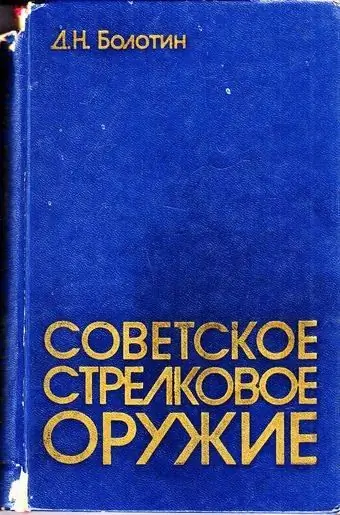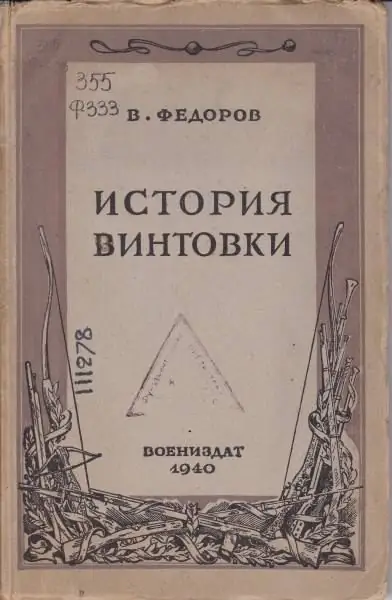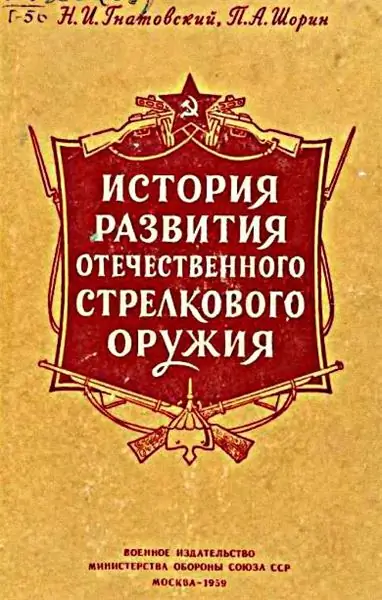- Author Matthew Elmers [email protected].
- Public 2023-12-16 21:49.
- Last modified 2025-01-24 09:17.
Let's start with what it is not customary to talk about in VO publications - the issue of historiography. Literally on one hand, you can count the articles, the authors of which refer to certain monographs, or articles by serious authors, and you can not even talk about dissertations and archival materials. Nevertheless, they write … Strictly speaking, there is nothing wrong with that. Popular material is a classic of the genre and does not imply the use of links. So to speak, it is wholly and completely based on the authority of the author. But authority is different, isn't it? One authority is earned by popular paraphrases, the other by the publication of scientific articles and monographs. However, if more attention is paid to the historiography of the issue, then no one will reproach anyone for anything. After all, then the readers would be able to judge the degree of reliability of the author's statements at least on the basis of his references to certain works of his predecessors.
It's kind of like an introduction. That is, historiography is very important both for clarifying the informational component of any issue, and for … a better understanding of the time when certain works were written. The latter is also important. It's like dinosaur paw prints on petrified clay.

"Komsomolskaya Pravda" 1977
Well, now closer to the subject. Before you, dear readers, an article of the Soviet era, namely 1977, published in Komsomolskaya Pravda, and which is a review of the first episode of the Star Wars movie. Recall that this film was not shown in the USSR at that time. The shots from it could be seen only in the movie "The Return of the Resident", but the citizens of Russia managed to watch "Star Wars" themselves only after 1991. Let's re-read this "note" again and note that "the word is a truly magical thing" (as a certain Dumbledore said). However, even the ancient Aesop argued that it is language that is both the most beautiful and the most disgusting of what is in the world. We take the necessary words, arrange them in a certain way, and we get the desired effect - “there” everything is bad, and their cinema is also primitive. In a word - "The West is rotting." But it was possible to write this way not only about Western cinema and the absolutely disgusting local way of life, but also about our achievements with the opposite quality. According to the scheme - "there" everything is bad, we have "good". Such is the black and white presentation of information - simple and understandable for the most primitive mind.
Well, and, of course, Soviet authors used similar techniques when describing various technical achievements that took place in our domestic history and, in particular, the same rifle of Captain Mosin!
In previous articles on this topic, the story of how it was created and how it got its impersonal name was based on photocopies of archival documents from the St. Petersburg Museum of Artillery and Signal Corps. These materials have been in the archive there since 1891, written with pen and ink, and both historians before and after 1917 could see them. And, probably, they turned to them. But here's what, however, came out of their pen …

The book by D. N. Bolotina
Here is what, for example, is written in the book by D. N. Bolotin “Soviet small arms. (Moscow: Military Publishing House, 1986, p. 40): “Giving an assessment to the brainchild of a Russian inventor, A. A. Blagonravov wrote: “Not a single inventor abroad has managed to achieve such amazing completeness in the design of not only a rifle, but also any other type of firearm””(Taken from the book by V. N. rifles (1849 - 1902). M., 1951. P.5.) The statement is, of course, flattering, but … at least controversial, even if it was expressed by A. A. Blagonravov. Just abroad there were many inventors who created weapons no worse than the Mosin model. And judging by the geography of distribution of certain rifles, for example, the same Mauser rifle, it will be possible to draw a conclusion about something completely different. The point is that usually people buy either the best or the cheapest. And here the question arises, which countries, besides Russia, had these rifles in service? It is clear that every frog praises its swamp, but you also need to know the measure, right? That is, to write in such a way that one does not sin too much against the truth, and one praises oneself. Just think a little with your head and work with words. Although like this, "off the shoulder", writing, of course, is easier and more profitable in all respects.
But authors who knew how to write differently in our USSR, nevertheless, were! Let us turn to such capital work as the monograph by V. G. Fedorov, which is called “The History of the Rifle”. Originally published in 1930 and republished in 1940, this work is considered a classic work on the topic. And this is what we read on page 94: “On April 16, 1891, S. I. Mosin was adopted for the rearmament of the Russian army. Since in this rifle, not all parts were invented by S. I. Mosin, and there were details developed by members of the commission or made according to the idea of a Nagant (clip), then when the sample was approved, the rifle did not receive the name of S. I. Mosin, and was named "Russian 3-line infantry rifle mod. 1891 ". As you can see, “all dots above and” are immediately placed here, exhaustive and truthful information is given, and there is nothing about the Russophobe tsar who bowed to the West, and the bribe minister Vannovsky.
Further, on pages 95, 96, 97, the contribution of S. I. Mosin in the creation of a Russian three-line rifle. At the same time, the author explains why the corresponding sample of 1891, adopted by the Russian army … was not named after S. I. Mosin. “The weapons department of the artillery committee, which was examining the question of what parts of the rifle S. I. Mosin could have received a privilege, noted that he had developed the following parts: … That is, he used the same documents from the archives of the Artillery Museum, the photos of which were previously given here by the author of this article. That is, everything was known, transparently, but could be interpreted … by different authors in different ways.

The book by V. G. Fedorova
At the end of the chapter, V. G. Fedorov notes that “The question of the name of the 7.62 mm rifle was widely debated and caused a lot of controversy among the gunmen of that time. However, regardless of the decisions made, we must categorically admit that in the design of our 7, 62-mm rifle, which is in service with the Red Army, Mosin's work is of paramount importance."
It hardly needs to be emphasized that every word in the above paragraph is weighed and corresponds to the actual state of affairs, as, indeed, everything that he wrote earlier, as based on documents. It is also true that it does not contain any praises of the "best Soviet" and blasphemy of everything Western. In a word, he was an honest and decent person, and did not particularly bow to the new government. By the way, the book by V. G. Fedorova has been digitized today and is available on the Internet, you can download and read it for free.
However, one and the same books cannot be republished all the time - new people are growing up, the style of speech is changing, “people just want something new,” so later, after Fedorov’s book, other publications appeared on the same topic, including the extremely popular one at one time. book by N. I. Gnatovsky and P. A. Shorin "History of the Development of Domestic Small Arms" (Moscow: Military Publishing House, 1959) You cannot reproach them for their lack of professionalism: the first is a candidate of technical sciences, associate professor, colonel-engineer, the second is an engineer-lieutenant colonel.

The book of N. I. Gnatovsky and V. A. Shorin
Surely they could have had access to the materials of the above-mentioned archive, they could not have had, but nevertheless, in their description, the “fight for a rifle” looks like this: “By this time, the commission already had a design for the future Mosin system rifle, which surpassed the Nagant system in terms of its data. and other foreign systems. It would seem that we should have stopped at it. However, little believed in the success of the Russian designer. Nagant did not fail to take advantage of this. Knowing the attitude of the ruling circles and the military department to foreign equipment and foreigners, Nagan achieved the conclusion of a contract that was beneficial for himself with the Russian government. (Op. Cit. Pp. 139-140) It is hardly worth repeating here and writing about what has already been reported in the materials previously published here on VO. It's easier to re-read them and make sure that all this was not entirely true. And the contract with Nagan provided for him to receive not only the rifle itself, but also what Mosin, with all his talent, could not give: information about tolerances and hardening technologies, measuring tools and technological equipment, and even patents, both already available, so and future! The authors, however, do not have a single word about this!
But the authors have this: "On April 13, 1891, Vannovsky presented to the tsar a report" On the approval of the model of a three-line pack rifle proposed by Captain Mosin. " In this report, Bankovsky was forced to admit that the system proposed by Mosin deserves preference over the Nagan system. At the same time, Vannovsky took all measures to depersonalize the Mosin rifle; he suggested calling it the Russian three-line rifle mod. 1891 On April 16, 1891 the Tsar approved the Mosin rifle model and ordered to call this rifle “three-line rifle arr. 1891 ", having removed even the word" Russian "from its name. This was how the tradition of assigning the name of its designer to a sample of weapons was broken and the last hint of the domestic origin of the newly introduced rifle was eliminated.
Underlined words and phrases are especially surprising here. Another thing is not clear: what is all this based on? After all, if we compare this text with the text of V. G. Fedorov, it becomes clear that the rifle had several authors, hence its "impersonality". But the authors could not help but know why the tsar dropped the word "Russian" from its name - for this he had serious reasons. But … they didn’t write anything about it, because in 1959 it was already clear to everyone that “tsarism is terrible”, “Tsar Alexander III, like all the Romanovs, was in awe of the West,” but Vannovsky did was a "corrupt tsarist satrap". Therefore, it was necessary to write in the "spirit of the day", that is, facts inconvenient for the "party line" to be ignored, and everything that can be used to denigrate the accursed tsarist past - to use! As the people say: "Every bast - in a line!"
That is, there was no question of any objective approach to the study of the history of one's country and speech in the USSR. And the documents … the documents were gathering dust in the archives, being unclaimed. Today, many people nostalgic for the USSR complain about distortions and misuse of information by journalists and historians of the "post-1991" era. And rightly so, there are absolutely odious examples. But … can they be blamed for this? They learned from such books as the creation of Gnatovsky and Shorin (and there were even more "cheating writings"). Who, in the same way, openly distorted and wrote not what is, but what is needed. So … at any time it is necessary to pay attention to historiography, archival materials, skillfully work with words and remember that, throwing a stone up, you can then easily drop it on your head! That is, to give a reason to accuse you of bias and falsification of facts.






